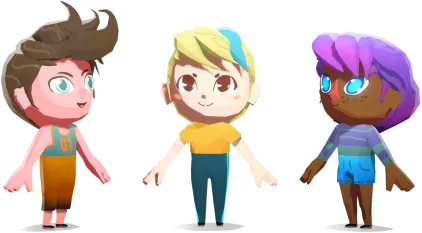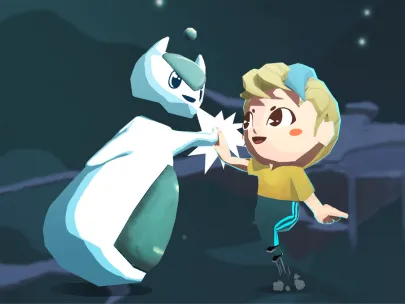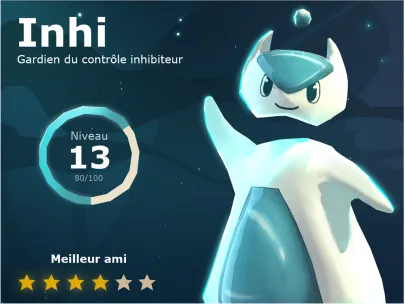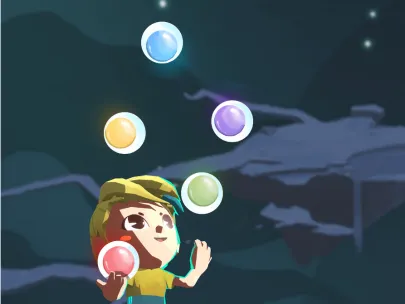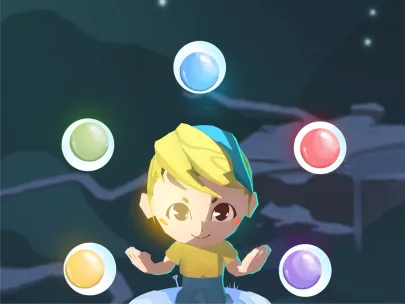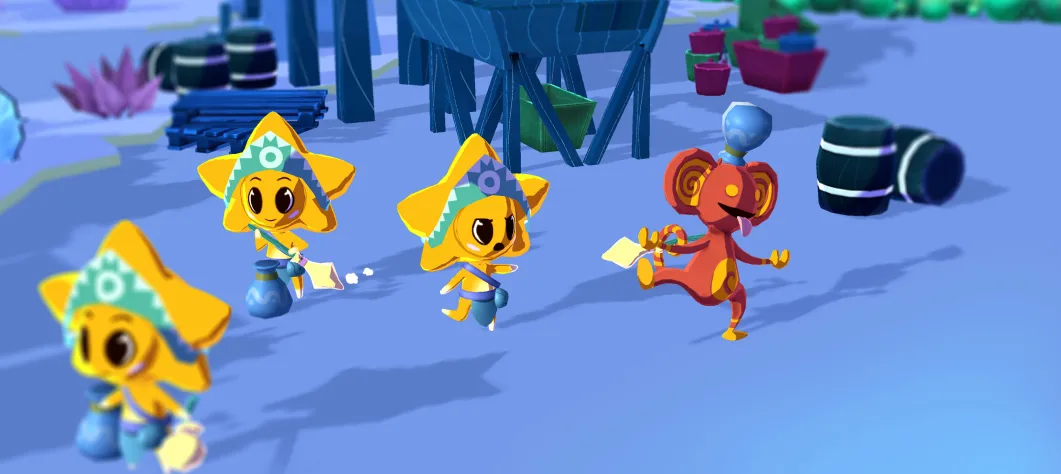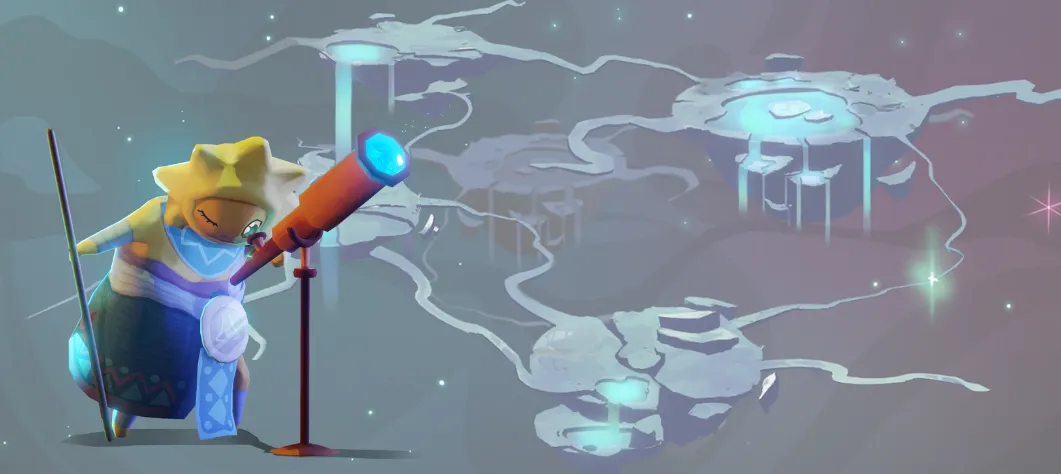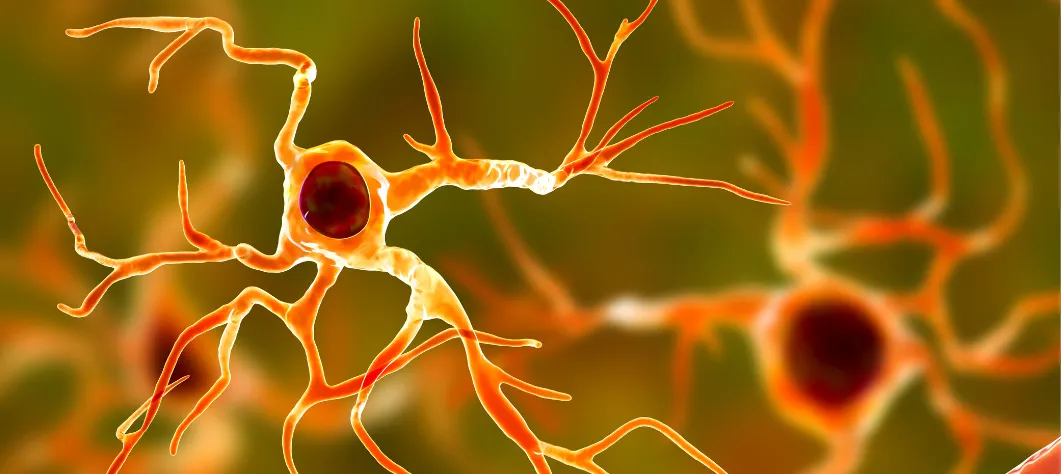Welcome to Babaoo
the educational video game to learn how to learn with fun


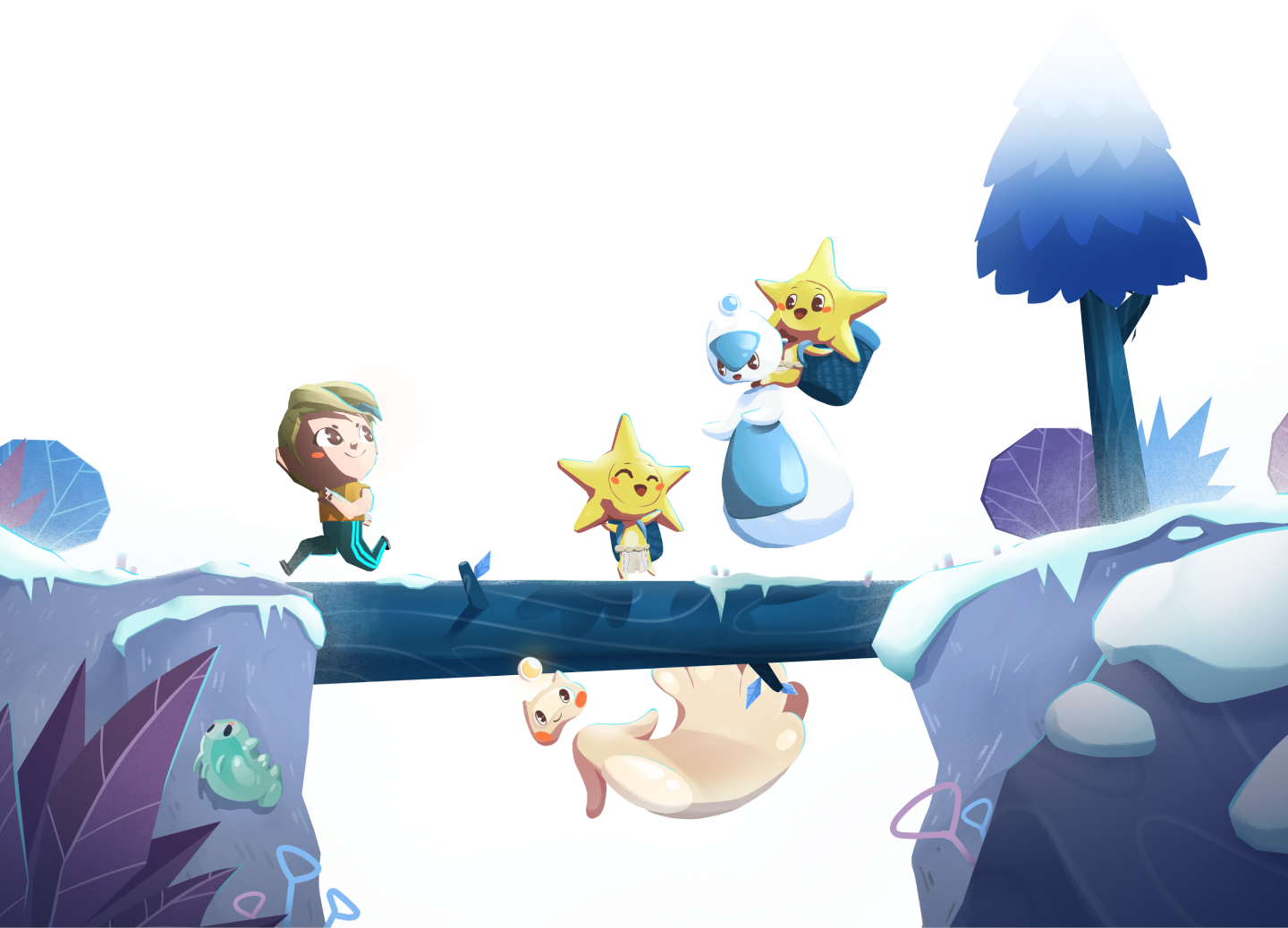
The Great Distraction has upset everything in the Brain World
The Brain World was a beautiful and peaceful place. Its inhabitants lived in harmony until the arrival of the Great Distraction. The Distractors have invaded the world of the Babaoos and turned everything upside down. The inhabitants are no longer themselves. Nothing works anymore… And to top it all off, Attention has disappeared!
Join the adventure to help the Babaoos unravel the mysteries of the Brain World and restore balance.
Team up with the Babaoos
Explore the world of Babaoos in total freedom
A multitude of landscapes to discover
The Brain World is a colorful universe divided into 5 biomes. Snow-covered hills, mangrove swamps, fields of flowers… Your journey will take you through landscapes as mysterious as they are poetic.
Each biome is the territory of an Executive Function
With its wintry decor, the Inhibitory Control biome invites you to keep a cool head, while the exuberant nature of the Attention biome attracts the eye and seems to do everything to distract you…
Just as the Executive Functions interact with each other, the biomes form a coherent whole, through which you move freely.
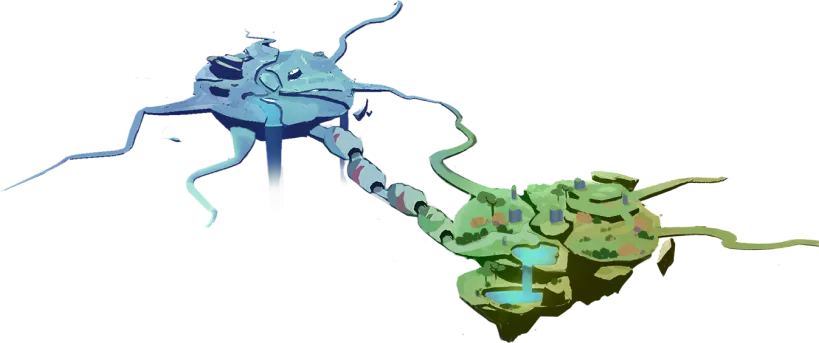
Discovering the neural network
As you explore the biomes, you’ll realize that they’re made up of a multitude of tiny islands: neurons. Linked by bridges, they form a vast network that you can explore at your own pace.
Before the Great Distraction, each neuron fulfilled a function in the great balance. It’s up to you to find out what the Distractors have disrupted, so you can re-establish the right connections and regain harmony.
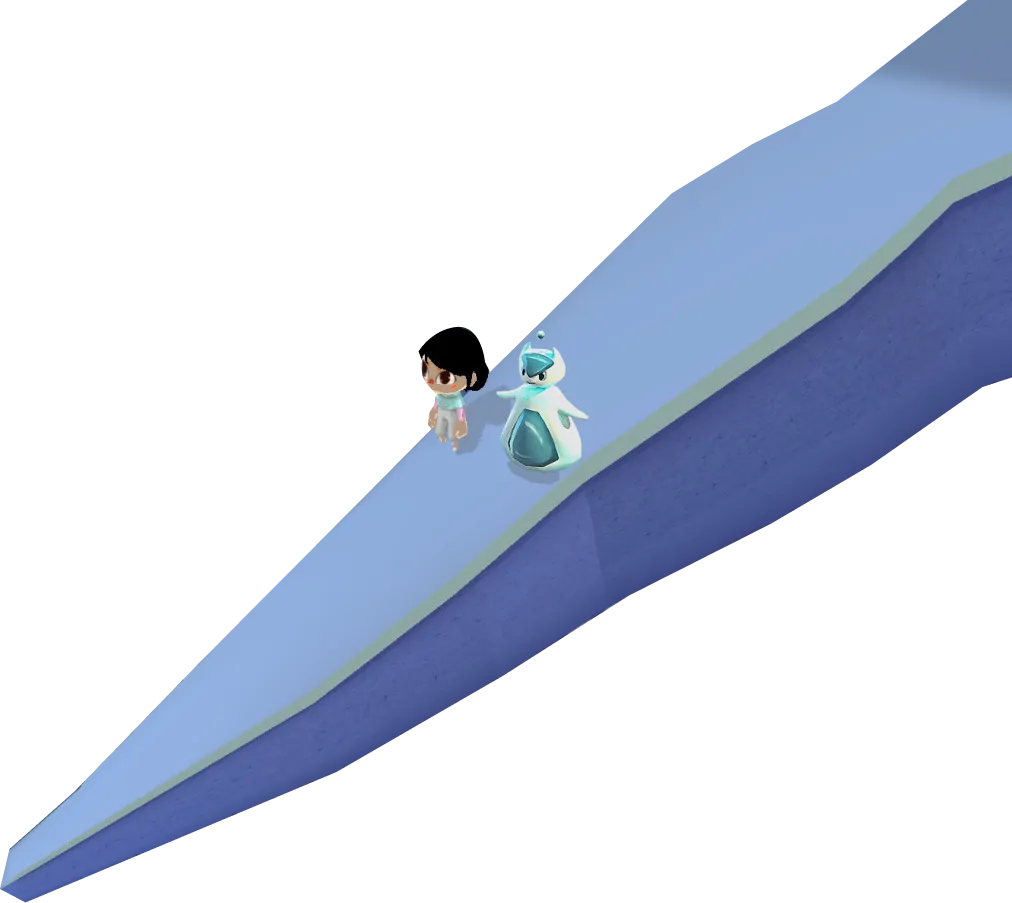
Distractors have invaded neurons
Distractors have always existed in the Brain World
These irresponsible creatures love to make a mess wherever they go, and they’re all about having fun. Normally, Babaoos, Astrocytes and Distractors live in harmony. But since the Great Distraction, the balance has been upset.
It’s up to you to team up with the Babaoos to inhibit the Distractors and free the Astrocytes from their influence.
Distractors personify the distractions that disturb us in real life
Whether they come from our environment, our sensations, or our thoughts, distractions draw our attention and prevent us from staying focused.
They are not inherently bad. But we need to learn to identify them so we can channel them when necessary.



Babaoo is based on 3 video game mechanisms: exploration, challenge, and confrontation
Explore the Brain World freely and accomplish extraordinary missions
Discover the Brain World and its dreamlike landscapes. You’ll lose yourself in the scenery and your imagination will roam free.
Little stories from the big Babaoo story, missions punctuate your journey. As you chat with the Astrocytes, you soon realize that there’s a lot going on with neurons. The astrolob match is about to start, but the coach has disappeared! Where did he go? And the concert… How are the musicians going to play if their instruments don’t turn up? After you’ve helped the band members prepare for their parade, you’ll have a moment to rescue those panicking Astrocytes.
Babaoo is an educational video game that leaves plenty of room for children’s imagination and creativity
Free exploration at their own pace helps build children self-confidence, while completing missions nurtures their sense of competence.
In addition to advancing the adventure, the missions have a metacognitive purpose: by achieving their objectives, players become aware of their own cognitive processes. They understand how the World-Brain – their brain – works.
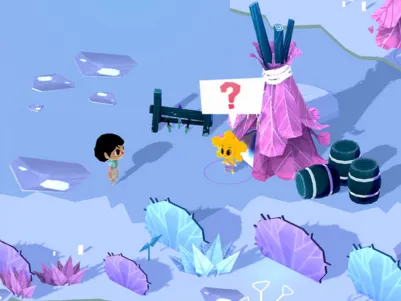
Challenge yourself to gain experience
During your missions, you’ll sometimes be asked to help the Astrocytes with their daily tasks: feeding neurons, recycling waste, building houses, or repelling bacteria… There’s so much you can do on a neuron!
Repeat these mini-games as many times as you like to gain maximum experience. Challenge your Babaoos to progress and unlock all their superpowers!
The challenges stimulate the player’s Executive Functions and exercise his cognitive skills
In Babaoo, mistakes are always treated with kindness, allowing the player to progress. Instant feedback enables players to understand and learn from their mistakes.
By repeating and overcoming levels of difficulty one after the other, children reinforce their cognitive skills at the ideal pace: their own.
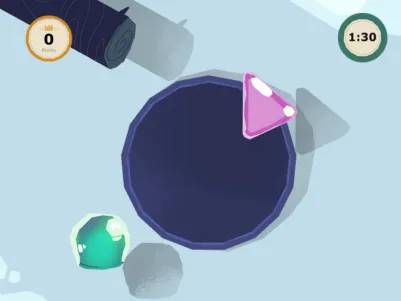
Fighting Distractors
The Distractors are driving the Astrocytes crazy! Team up with your Babaoos and engage in frenzied confrontations to defeat them.
United we stand, divided we fall! Combine the different powers of the Babaoos to fight your opponents.
But be careful! Some Distractors are tougher than others. Train your Babaoos to make them strong enough to beat them.
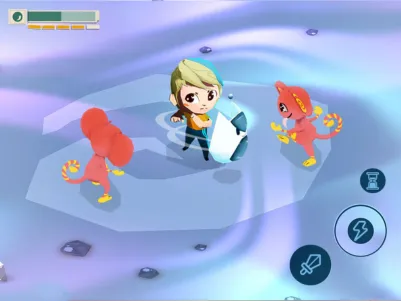
Frequently asked questions
Who can play the educational video game Babaoo?
Babaoo is an educative video game designed for children aged 7 to 11. They can play the game at home, at school or even in the office of a remedial professional (speech therapist, neuropsychologist, etc.).
To get the most out of the Babaoo adventure, players should be able to read. Babaoo is an adventure game based on written content: dialogues between the characters, collectable cards that provide information about the brain and how it works, interfaces with written text, etc.
However, all dialogue text is also voice dubbed, making Babaoo easier to use, especially for young readers.
What does the free version of the game offer?
The free version of Babaoo allows you to test part of the game to get a preview of what the app can offer you. It allows you to create a single profile and provides access to:
- The first two Neurons of Adventure Mode
- Part of the content of the Executive Function “Inhibition” in Training Mode:
- Discovery: full content
- Stimulation: the first 5 levels of the Precision challenges
- Missions: an example activity
How to play Babaoo educational app?
- The Babaoo educational application is available on the stores (App Store and Google Play).
- On tablet or smartphone (to get the best experience, we recommend that you play Babaoo on a tablet device).
Is my child safe when playing Babaoo video game?
The answer is YES! 🥰
- The Babaoo educational game app contains no advertising.
- Babaoo is a closed, single-player video game. This means that your child is not exposed to other people while playing.
- Babaoo does not contain violence or profanity.
- Babaoo complies with current RGPD regulations.
How much does Babaoo educational video game cost?
Babaoo offers 3 distinct plans, with varying numbers of profiles:
Remedial Offer:
- 50 profiles
- €30 /month (or €179 /year)
Teacher Offer:
- Custom subscription: contact us
Parent Offer:
- 3 profiles
- €19 /month (or €129 /year)
Who's behind Babaoo education game?
Babaoo is a team of 30 professionals in the field from cross-disciplinary fields:
– Neuroscience – Cognitive psychology – Pedagogy and teaching – Remediation – Video games – Graphic art – IT development –
To find out more, check out the team presentation.
How can I get involved in designing the Babaoo educational video game?
Thank you for helping us develop Babaoo!
Want to share an idea for improvement with us? Go directly to a dedicated form on the Babaoo application homepage, or fill in the contact form. All your suggestions will be carefully read and taken into account by our Design team.
Do I need to create an account to play Babaoo?
You don’t need an account to play Babaoo: a Demo mode lets you explore the game’s content without signing up. To unlock more content, you’ll need to create an account and subscribe.
Please note: your progress in Demo mode will not be saved across devices or transferred to your future Babaoo account.
Do I need to be connected to the internet to play Babaoo education video game?
You need to be connected to the internet only to create an account and to log in.
What are the technical requirements to use the Babaoo app?
For Babaoo to work properly, here are the ideal technical requirements:
- 3 GB of RAM for optimal performance
- For Apple devices: iOS 13.0 or later
- For Android devices: version 5.1 or later
- Using a tablet is strongly recommended
Note that the app is not available for download on Google Play (Android) if the device’s RAM is less than 1.5 GB.
How many player profiles can I create on the app?
With the free version, you can create only one player profile.
By subscribing to a plan, you can create multiple profiles.
The number of profiles varies depending on the subscription type: 50 with the Remedial Offer, 30 with the Teacher Offer and 3 with the Parent Offer.
I've forgotten my password
You can request a password reset in the game from the login screen by clicking on “Forgot Password”. A new password will be sent to the email address associated with your Babaoo account.
We strongly recommend that you change this password.
How do I delete my account?
To delete your account, go to the admin area, then to “Account,” and click on “Delete my account”.
Warning: this action is irreversible, and all your progress data will be lost.
I've encountered a bug...
If you encounter a bug, you can contact us by describing the issue precisely and where it occurred. If it is a blocking bug, close the application and reopen it.
If the game has completely crashed, follow these steps:
- Uninstall the application from the store
- Reinstall the application
Your data will not be lost.
If the crash persists, contact us.
I'd like to test Babaoo with my pupils or the children I'm tutoring
Would you like to test the educational video game Babaoo in a school or a practice? Or learn how Babaoo can be used in an educational setting or with children with learning difficulties?
Babaoo’s Training mode is designed for this purpose! For each Executive Function, you will find:
- Discovery: engaging content that promotes metacognition
- Stimulation: fun mini-games that stimulate Executive Functions across the three phases of learning: awareness, automation, contextualization
- Missions: real-life activities to facilitate transfer
I can't find an answer to my question
Whatever your question, we will be happy to answer it!
Contact Babaoo
About educational video games
What is an educational video game?
An educational video game is a digital application designed to enable children to learn while having fun. Unlike conventional video games, which focus on entertainment, educational video games stimulate fundamental learning (reading, writing, mathematics, geography, etc.), cognitive development and sometimes even emotional skills.
Unlike board games, which encourage collective thinking, educational video games focus on an individual learning experience. They can be played on a mobile device (iPad or Android tablets, smartphones…), a computer (via software or a web browser) or a console.
Characteristics of an educational video game
🎲 Gamification of learning
An educational video game maintains a subtle balance between fun and educational objectives. Missions encourage children to think, solve problems and try out different strategies… all while having fun! Children and teenagers learn by playing, without perceiving tasks as constraints or “homework”.
🌱 Incremental progress
The best educational video games are designed to adapt to the child’s skill level, adjusting difficulty according to progress. Thanks to this personalization, children follow their own learning path, avoiding the frustration of overly difficult challenges and the boredom of overly simple tasks.
What are the advantages of an educational video game for children?
Video games are already part of our children’s daily lives. By choosing educational apps, we turn screen time into a useful learning activity. 📖
Intelligent screen time
Unlike purely recreational video games or videos watched passively (TV, cartoons, etc.), an educational video game actively engages the child in a learning process.
There are many games that enable children to develop their academic, cognitive, social and emotional skills (via problem-solving, puzzles, or by helping them discover their emotions) in a playful way. This type of content makes screen time “smart”: it transforms an entertainment activity into a useful learning moment. 🧠
No logistical constraints
Educational video games let you play without the constraints associated with setting up physical board games: no need for specific equipment, preparation, playing partners, or following sometimes complex rules. A simple click launches the game! The child immediately focuses on the learning and playing experience, without getting lost in logistical details.
Educational video games and board games complement each other
| Comparison criteria | Board games | Educational video games |
| Social interaction | Encourages direct group interaction (family, friends) | Individual or remote multiplayer moments |
| Playtime | Group game, requires several participants | Can be played alone or online with other players |
| Support | Physical equipment, set and accessories | Digital support (computer, tablet, console, telephone) |
| Skills developed | Communication, collaboration, respect for rules | Logic, memory, problem-solving, autonomy |
| Context of use | Ideal for play sessions with family and friends | Can be used individually or when social interaction is not possible |
Positive reinforcement
Edutainment games exploit positive reinforcement, a well-established principle in behavioral psychology: every success in the game (achieving an objective, solving a challenge or quest) is immediately rewarded, whether by points, access to a new level or virtual congratulations. ⭐
This activates the circuits of dopamine, a key neurotransmitter in the process of motivating and reinforcing learning. By provoking a sensation of pleasure, dopamine encourages the child to continue his effort and persevere. 💪
But be careful not to become addicted!
What are the best educational video games in 2024?
In 2024, several educational video games stand out for their pedagogical quality and ability to stimulate learning.
Babaoo
- Creation date: 2023.
- Age: from 7 years.
- Skills developed: impulsivity management, attention control, metacognition.
- Availability: tablet and mobile (iOS and Android).
- Game presentation: Babaoo is an educational application offering games and activities to stimulate children’s Executive Functions. The game’s 1st opus, released in 2023, focuses on managing Inhibitory Control.
PowerZ
- Creation date: 2021.
- Age: 6 years and up.
- Skills developed: academic learning, creativity, sense of responsibility.
- Availability: computer, tablet, mobile (iOS and Android).
- Game presentation: Power Z is an educational video game offering children mini-games developed by education experts, to practice school subjects (math, history, spelling, etc.).
Little Big Planet
- Creation date: 2008.
- Age: 7 and up.
- Skills developed: collaboration, problem-solving, logic.
- Availability: console (PlayStation).
- Game presentation: Little Big Planet is an edutainment platformer with puzzles to be solved in pairs, set in a colorful universe. It encourages collaboration to overcome simple, logical challenges.
Minecraft
- Created: 2009.
- Age: 7 and up.
- Skills developed: creativity, exploration, experimentation, curiosity.
- Availability: computer, tablet, mobile, console (iOS, Android, Windows Phone, Xbox, Playstation, Nintendo).
- Game overview: Minecraft is an open-world construction game where players can create and explore freely. It stimulates creativity, research and experimentation in a limitless environment.
Super Mario Maker
- Creation date: 2015.
- Age: from 7 years.
- Skills developed: logic, creativity, design.
- Availability: console (Nintendo).
- Game presentation: Super Mario Maker is a video game that lets children create their own Mario levels, combining logic and creativity to design platform courses.
Big Brain Academy
- Creation date: 2021.
- Age: 10 years and up.
- Skills developed: logic, attention, inhibition, humor.
- Availability: console (Nintendo).
- Presentation of the game: Big Brain Academy is a puzzle game offering tests to stimulate logic, memory and attention, ideal for solo sessions, with family or friends.
At what age can children start playing video games?
The Screen Commission recommends that parents do not expose children to screens before the age of 6. Even if educational video games have their advantages, parental guidance is necessary to ensure that children play age-appropriate games for a reasonable length of time.
Video games for children aged 6 to 9
Between the ages of 6 and 9, children develop autonomy in their play and can play educational games that stimulate their thinking, logic and strategic skills.
- Game types: logic games, math games, platform games that encourage problem-solving, or games that involve creative challenges.
- Recommended screen time: no more than one hour a day.
➡️ Our selection of the best games for 6-9 year-olds
Video games for children aged 9 to 12
From the age of 9, children are able to explore more sophisticated educational video games, often with a stronger social component.
- Game types: educational or creative games, strategy games, multiplayer games and games that encourage critical thinking and collaboration.
- Recommended screen time: always limited to a maximum of two hours a day, with an emphasis on balancing video games, schoolwork and sports and cultural activities. And don’t forget to turn off all screens at least 2 hours before bedtime! 🌙
➡️ Our dedicated article on the best games for 9-12 year olds
How much screen time to allow?
Rather than banning screens, it’s better to frame their use, set a duration and discuss content to manage their impact. By applying simple rules such as limiting screen time in the morning, at mealtimes and before bedtime, it is possible to protect children’s well-being and ensure balanced use of technology.
✏️ Please note: before bedtime, screens disrupt sleep and affect memorization and learning. 😴
💡 Babaoo Tip
The idea is to find a happy medium, ensuring that screen time doesn’t interfere with children’s sleep or cognitive development.
Avoiding video game addiction
Let’s face it, just because your child likes to spend half an hour a day on his favorite video game (and would probably play for hours on end if it weren’t for you) doesn’t mean he’s “addicted” to video games. Nevertheless, as parents, it’s our duty to monitor our children’s behavior and prevent the risk of addiction. Here are a few tips to help you do just that!
⌛ Set a time limit for playing
Start by setting precise limits on the daily or weekly amount of time spent playing video games. For example, by creating a visual schedule that your child can consult, and that incorporates time for gaming, homework, family activities and outdoor recreation.
You can also use a timer or parental control apps to track and regulate time spent playing.
📚 🏀 Encourage a variety of activities
The key is to help your child understand that video games should be just one part of his or her life, not an exclusive activity. Encourage a balance between video games and other activities: sports, reading, creative activities or outdoor outings. Children learn by imitation, so don’t hesitate to practice these activities with them to reinforce their commitment. 👪
💡 Babaoo Tip
Stay alert for certain signs that may indicate addictive behavior: excessive irritability when asked to leave the game, disinterest in other activities or disturbed sleep. If you notice these symptoms, don’t hesitate to talk to a professional for help.
How much does an educational video game cost?
The price of an educational video game can range from €0 to over €60, depending on the platform and the quality of the experience offered. While free educational games are easily accessible, paid educational applications, even at a low price, often offer a better experience, without distractions or advertising.
Subscribing to a library of educational games is also an interesting option for accessing different educational content, with a fixed monthly cost. 💰
Why do some games have to be paid for?
Paid educational video games generally offer higher-quality content. They are developed by specialized teams, who invest time and resources to create games that are both entertaining and pedagogically relevant. 🤓
Unlike free games, which are frequently funded by advertising, paid games are free of intrusive ads and ensure a safe, distraction-free gaming environment. By paying, you ensure your child a learning-centric experience in a protected setting. 🔒
Educational video games at school: a good idea or a bad one?
According to the Commission Écrans, digital tools are enriching if they bring real educational value, but they also present risks.
- On the one hand, some educational software encourages creativity, collaborative learning and can help personalize teaching, which is beneficial for students. 🏆
- On the other hand, the Commission warns of the dangers associated with screen addiction and exposure to inappropriate content, especially with platforms, which include microtransactions and intentionally addictive mechanisms.
In other words, video games, and educational video games in particular, are neither fundamentally good nor bad. It all depends on what kind of game we’re talking about, how it’s used, in what context and with what support. The important thing is not to leave students alone, with no framework or limits in front of a screen.

